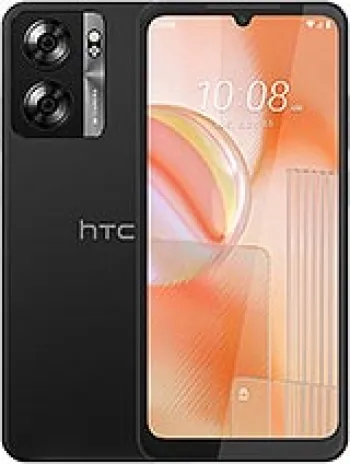
Overview of HTC Trophy
The HTC Trophy, released in May 2011, represents an important phase in the evolution of smartphones, as HTC worked to carve out a niche in a rapidly growing market. This device was designed with both style and function in mind, catering primarily to users interested in the emerging Windows Phone ecosystem at the time. While the device is now discontinued, its specifications and features remain a testament to the technologies and trends that defined the early 2010s in the smartphone industry.
Design and Build
The HTC Trophy was fashioned with a sleek design that measured 119 x 61 x 12 mm, compact enough for convenient one-handed use. Weighing 139 grams, it offered a reassuring sturdiness without being unwieldy. The phone featured a black color scheme, providing an understated elegance typical of HTC's design ethos. It accommodated a Mini-SIM card, a standard for phones of that era.
Display
The smartphone came equipped with a 3.8-inch TFT display. With a resolution of 480 x 800 pixels and an aspect ratio of 5:3, the screen had a pixel density of approximately 246 pixels per inch. The display quality was notably sharp for its time, making it suitable for viewing images and text with satisfactory clarity and color accuracy.
Performance and Hardware
Under the hood, the HTC Trophy was powered by the Qualcomm QSD8650 Snapdragon S1 chipset, which contained a 1.0 GHz Scorpion CPU and an Adreno 200 GPU. Backed by 576MB of RAM, the device offered a decent multitasking experience given the era's standards. Although it lacked an expandable storage feature, it provided an internal storage capacity of 16GB, sufficient for storing apps and media files.
Camera and Multimedia
Photography capabilities were highlighted by a 5MP rear camera, featuring autofocus and an LED flash for low-light conditions. The camera was capable of recording 720p videos at 24 frames per second. While it did not include a front-facing camera, the primary camera's quality was adequate for casual photography and video recording. Additionally, the device offered stereo speakers and a 3.5mm headphone jack, enhancing audio experiences for music lovers.
Software
The HTC Trophy ran on the Microsoft Windows Phone 7 operating system, which was known for its tile-based user interface. It integrated Bing Maps for location services, and users could browse the internet using an HTML-supported browser. The WP7 OS offered a smooth, user-friendly experience, focusing on seamless integration with Microsoft services, which was a major selling point for many professional users.
Battery Life
The device was equipped with a removable Li-Ion 1300 mAh battery, providing up to 286 hours of standby time and up to 4 hours and 50 minutes of talk time. While these specifications are modest by today's standards, they were quite adequate during the period of the phone's release, allowing for a full day of moderate use without frequent recharging.
Connectivity and Network
The HTC Trophy supported a variety of communication technologies, including GSM, CDMA, HSPA, and EVDO networks. It offered connectivity speeds of HSPA 7.2/2 Mbps and EV-DO Rev.A 3.1 Mbps. The device supported Wi-Fi 802.11b/g/n with DLNA, Bluetooth 2.1 with A2DP and EDR, GPS with A-GPS, and microUSB 2.0 port for charging and data transfer. It also featured a stereo FM radio with RDS for more entertainment options.
Sensors and Additional Features
Regarding sensors, the HTC Trophy included an accelerometer and a proximity sensor, commonly found in smartphones of its generation to provide features like auto-rotate for the display. Despite being basic, these sensors played a role in enhancing the device's usability.
Market Position and Pricing
Upon release, the HTC Trophy was marketed at approximately 90 Euros, positioning it as a mid-range smartphone accessible to a broad user base. Its design and features were aimed at customers interested in the Windows Phone platform and those looking for a reasonably priced device with decent specifications.
Legacy and Discontinuation
Though the HTC Trophy is no longer in production and has been overshadowed by advances in smartphone technology, it remains a noteworthy example of early 2010s mobile innovation. Its dedication to design, integration with Microsoft’s software ecosystem, and its ambitious attempt to leverage Windows Phone 7 contributed to the diverse history of smartphone development.
Key Features of HTC Trophy
- Network Technology: GSM, CDMA, HSPA, EVDO
- Compact Dimensions: 119 x 61 x 12 mm
- Lightweight: 139 g
- Display: 3.8 inches TFT with 480 x 800 pixels resolution
- Operating System: Microsoft Windows Phone 7
- Processor: 1.0 GHz Scorpion with Qualcomm Snapdragon S1 chipset
- Internal Memory: 16GB storage with 576MB RAM
- Main Camera: 5 MP with auto-focus and LED flash
- Video Recording: 720p at 24fps
- Sound: Stereo speakers and 3.5mm audio jack
- Wireless Connectivity: Wi-Fi 802.11b/g/n with DLNA
- Bluetooth: Version 2.1 with A2DP and EDR
- GPS: GPS and A-GPS support with Bing Maps
- FM Radio: Stereo FM with RDS
- Battery: Removable 1300 mAh Li-Ion
- Sensors: Accelerometer and proximity
HTC Trophy Key Disadvantages
- No front selfie camera.
- Lacks external memory card slot for storage expansion.
- Runs on the outdated Microsoft Windows Phone 7 OS.
- Low RAM (576MB) compared to modern standards.
- Older chipset (Qualcomm QSD8650 Snapdragon S1) and GPU (Adreno 200).
- Limited battery capacity (1300 mAh) resulting in short talk time.
- Thick body profile at 12 mm.
- Discontinued model, lacking software updates and support.
- Low resolution display with a modest pixel density (~246 ppi).

View Also
More Phones
All Rights Reserved +14266 Phones © Mobilawy 2025

























